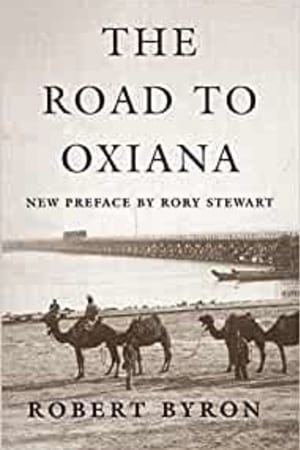Reference
Writing, Research & Publishing Guides
- Publisher : Oxford University Press; Reissue edition
- Published : 18 May 2007
- Pages : 291
- ISBN-10 : 0195325605
- ISBN-13 : 9780195325607
- Language : English
The Road to Oxiana
In 1933, the delightfully eccentric travel writer Robert Byron set out on a journey through the Middle East via Beirut, Jerusalem, Baghdad and Teheran to Oxiana, near the border between Afghanistan and the Soviet Union. Throughout, he kept a thoroughly captivating record of his encounters, discoveries, and frequent misadventures. His story would become a best-selling travel book throughout the English-speaking world, until the acclaim died down and it was gradually forgotten. When Paul Fussell published his own book Abroad, in 1982, he wrote that The Road to Oxiana is to the travel book what "Ulysses is to the novel between the wars, and what The Waste Land is to poetry." His statements revived the public's interest in the book, and for the first time, it was widely available in American bookstores. Now this long-overdue reprint will introduce it to a whole new generation of readers. This edition features a new introduction by Rory Stewart, best known for his book The Places In
Between, about his extensive travels in Afghanistan.
Today, in addition to its entertainment value, The Road to Oxiana also serves as a rare account of the architectural treasures of a region now inaccessible to most Western travelers, and a nostalgic look back at a more innocent time.
Between, about his extensive travels in Afghanistan.
Today, in addition to its entertainment value, The Road to Oxiana also serves as a rare account of the architectural treasures of a region now inaccessible to most Western travelers, and a nostalgic look back at a more innocent time.
Readers Top Reviews
Mary Ann IrvineBylev
A British sensibility and outsider view, absorbing read.
Allen Smalling
A thoroughly engaging if at times eccentric 1933 trek into Central Asia by way of the Middle East. Author Robert Byron's voice is sure. And the part of the world he treks to (Afghanistan into the former USSR) is not easy to get to, even today. If you like travel tales, this is a good one.
Michael BruchasAllen
A fair amount of religious intolerance in here - interwoven with a good travel narrative. The names of so many areas in Pakistan and Afghanistan have changed - so it's hard to track down what the cities which Byron chronicled in the 1930's are NOW. His time in Iran (then Persia) is illuminating though he has to disguise the name of the Shah in conversations and writing because late Shah Reza Pahlavi's father was MORE of a tyrant on the lines of Hitler + Stalin. The back story of his sometime traveling companion as a British spy is cool. And you learn from this book - so much more about Russia's attempts for control in Afghanistan in the 1930's! Byron is a Byzantine art and architectural expert with other previous books about his travels in Greece and Russia. Byron was also gay and his "gaydar" on reading people - some times adds to the narrative. The book was cited by Brit traveler writer Sara Wheeler in another book. She has cranked out some of fave travel books. Buy a USED Copy through Amazon - I did.
Nancy S. CunninghamM
It is presumed that the reader is interested in the areas and countries that Byron visited. Byron's main interest was architecture, and if that does not interest you, then this is not a book you would enjoy. Much of the book is a kind of pre-quel to "Eastern Approaches" and "The Great Game". It heads a list of works about Russia's designs on India and all the lands in between. The maps are very clear. I don't understand what another reviewer complains about. I found them easy to read and follow on them the author's journey. The language is not dated nor quaint. It is standard English of its time, the 1930s. This is not the only book to read about Central Asia but it is part of a library for those interested in the region and its history. Reviewer MLW gave two stars claiming that this edition's maps are unclear. The Penguin Travel Library he recommends has no maps nor photographs, nor any introduction. The latest edition, with a photo of a bridge and camels on the cover, has maps, photos, the original intro by Paul Fussell and a new preface by Rory Stewart, himself a Central Asian traveler.
John MNancy S. Cunni
Robert Byron’s descriptions are so vivid that he got me interested in architecture in general and Persian and Afghan architecture in particular. Unbelievable. His insights into the interactions of different cultures and world views were thoughtful, humorous and on the mark. This book will always have relevance.


